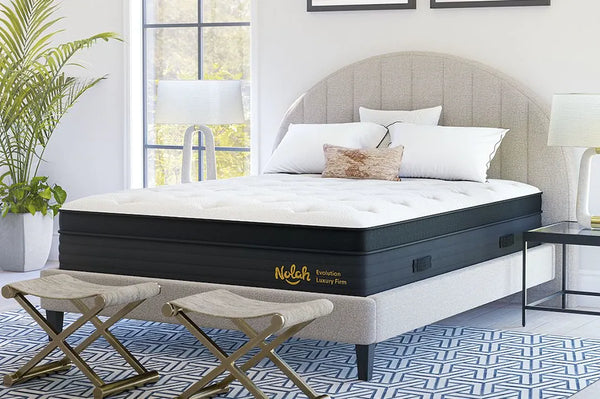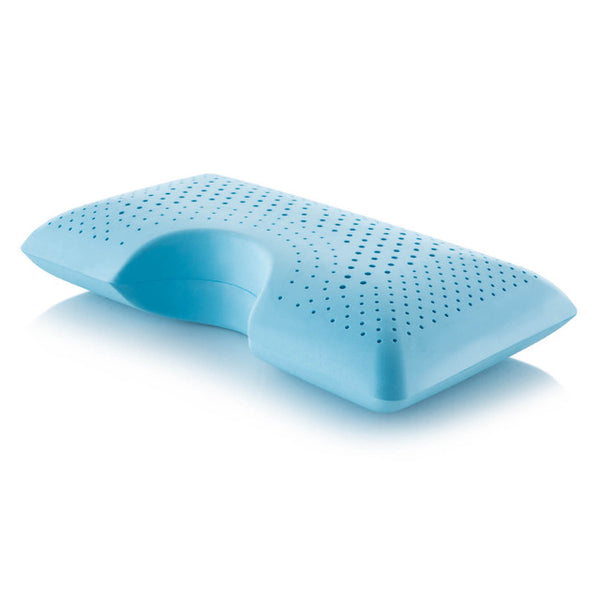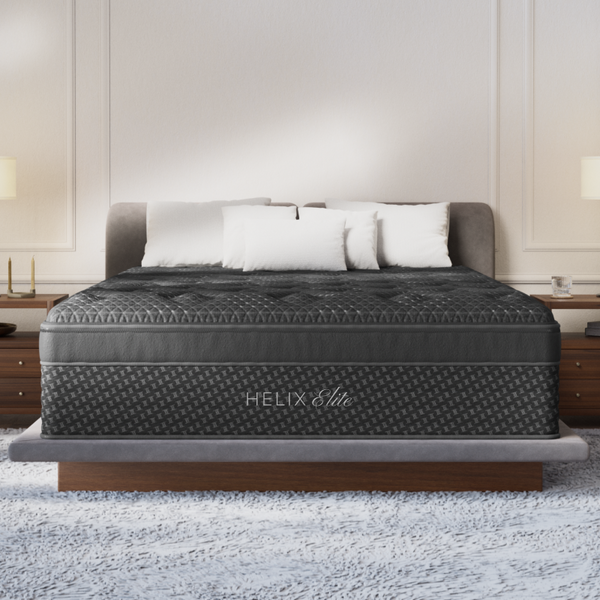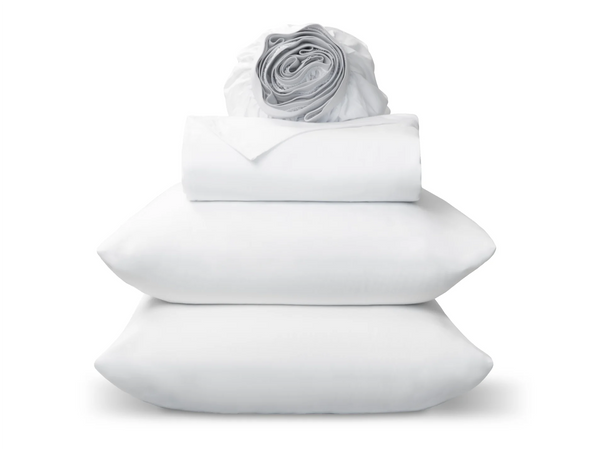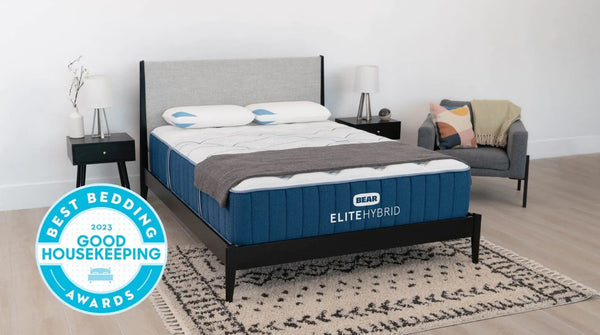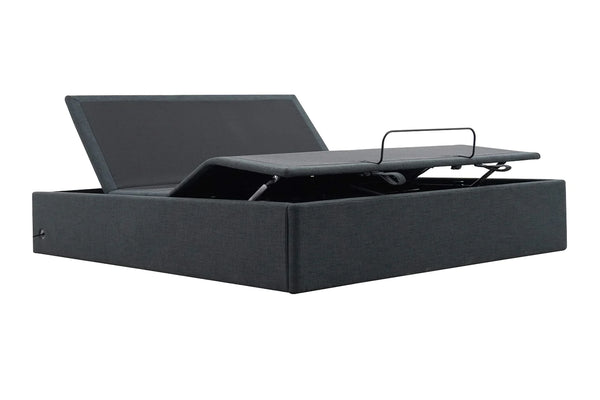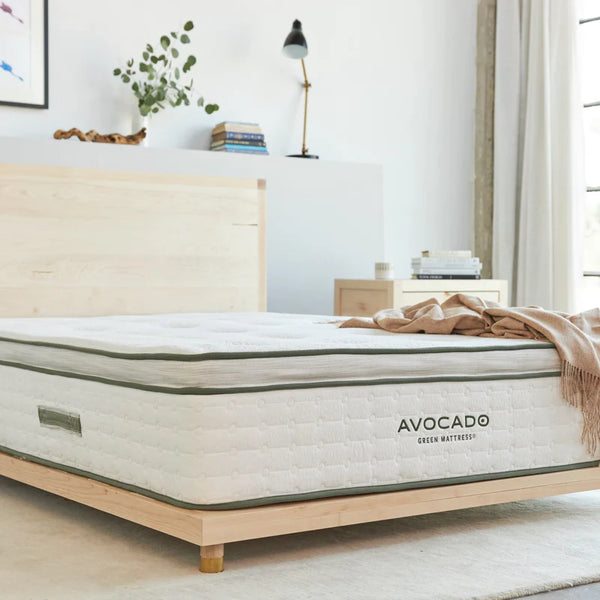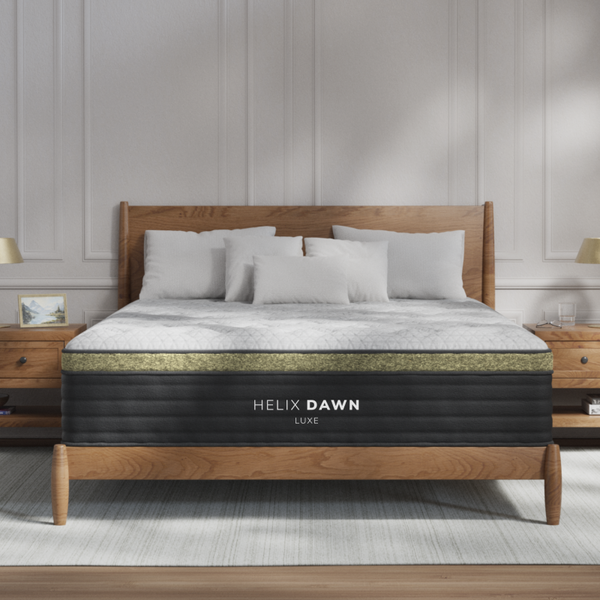Walking into a bedroom and seeing a beautifully made bed is one thing. Understanding what actually goes into making that bed comfortable and functional? That's another story.
At The Sleep Loft, we've helped thousands of customers find their perfect bedding setup. Most people don't realize just how many different kinds of bedding exist or how each piece serves a specific purpose.
Let me walk you through everything you need to know about bedding types, materials, and how to choose what works best for you.
Key Takeaway
- Bedding consists of three main categories: sheets (fitted, flat, pillowcases), bed coverings (comforters, duvets, quilts), and protective layers (mattress protectors, toppers)
- Cotton remains the most popular bedding material with 64% of consumers preferring it, but bamboo, linen, and Tencel offer great alternatives for specific needs
- Thread count isn't the only quality indicator. Material quality, weave type, and fiber length matter more than high thread count numbers
- Temperature regulation is crucial for sleep quality. Materials like cotton percale, bamboo, and linen work best for hot sleepers, while sateen and flannel suit cold sleepers
- The global bedding market is projected to reach $172.36 billion by 2030, showing how seriously people take their sleep environments
Understanding the Foundation: Essential Bedding Components
Before we dive into specific materials and styles, let's break down the basic kinds of bedding that form the foundation of any bed.
The Sheet System
Your sheets are the most intimate layer of bedding. They're what touches your skin every night, so getting them right matters more than you might think.
The fitted sheet is your first layer. It wraps around your mattress with elastic edges to stay in place throughout the night. Modern fitted sheets come in different pocket depths to fit various mattress heights. Standard sheets fit mattresses up to 12 inches, deep pocket sheets work for 13 to 17 inch mattresses, and extra deep pocket sheets handle mattresses 18 to 22 inches tall.
The flat sheet sits between you and your heavier bedding. I know there's a whole debate about whether flat sheets are even necessary anymore. According to recent polls, 70% of people still use top sheets while 27% have ditched them entirely. Millennials and Gen Z tend to skip this layer to save time making the bed, while older generations prefer the hygiene benefits.
Pillowcases complete your sheet set. They protect your pillows from oils, sweat, and wear while matching or complementing your sheets.
Bed Coverings and Warmth Layers
Once you've got your sheets sorted, you need something for warmth and style.
Comforters are single piece bedding items with two fabric layers and filling sandwiched between them. The stitching is spaced widely to keep the filling evenly distributed. They're easy to use since everything is integrated into one piece.
Duvets work differently. A duvet consists of two separate parts: an insert filled with down or synthetic materials, and a removable cover. This setup gives you flexibility – you can change the look of your bed by swapping duvet covers without replacing the whole thing.
Quilts feature three layer construction with visible stitching patterns. They include a top sheet, batting in the middle, and a bottom sheet, all secured with decorative stitching. Quilts work great for colder months or as an additional layer.
Coverlets are lighter decorative bed coverings that don't extend far beyond the mattress corners. They work well as extra layers in cold climates or as primary bedding in warmer seasons.
Blankets serve as the catch all category. They range from lightweight throws that add texture at the foot of the bed to heavy winter blankets designed for maximum warmth.
Protective and Enhancement Layers
The layers beneath your sheets matter too, even if guests never see them.
Mattress protectors shield your mattress from spills, dust mites, allergens, and general wear. They come in materials like cotton, down, wool, polyester, and vinyl. Some include waterproofing, cooling elements, and hypoallergenic properties. At The Sleep Loft, we offer a range of mattress protectors designed to extend the life of your investment while maintaining comfort.
Mattress toppers add cushioning and can change the feel of your mattress. If your mattress feels too firm, a soft topper can add plushness without requiring a whole new mattress.
Materials That Make a Difference
The material your bedding is made from impacts everything – from how it feels against your skin to how often you'll need to wash it.
Cotton: The Reliable Standard
Cotton dominates the bedding world for good reason. Research shows that 64% of consumers prefer cotton bedding, and it's easy to see why.
Cotton is naturally breathable, which helps keep your body temperature steady throughout the night. It's absorbent too, making it great if you tend to sweat while sleeping. You'll find cotton sheets in every price range and style imaginable.
Not all cotton is created equal though. Egyptian cotton, Pima cotton, and Supima cotton represent the premium end. These types feature extra long fibers that create stronger, softer, and more durable fabrics. Egyptian cotton comes from the Nile River Valley and is hand picked to preserve fiber quality. Pima cotton grows in the southwestern United States and offers similar long fiber characteristics at more accessible prices. Supima cotton is the finest American grown Pima cotton meeting specific quality standards.
Organic cotton is grown without harmful pesticides, herbicides, or synthetic fertilizers. It costs more than conventional cotton, but appeals to people concerned about chemical exposure and environmental impact. The Avocado organic cotton sheets are a great example of premium organic bedding that combines sustainability with luxury comfort.
Bamboo: The Eco Friendly Alternative
Bamboo bedding has experienced remarkable growth lately. The bamboo gets processed into viscose or rayon through either physical mashing or chemical processing.
The resulting fabric offers silky softness, impressive moisture wicking properties, and natural temperature regulation. Bamboo's rapid growth, minimal water needs, and natural pest resistance make it environmentally appealing.
There's some debate here though. While bamboo cultivation is eco friendly, the chemical processing required to create bamboo viscose can involve harsh chemicals. Look for bamboo bedding from manufacturers using closed loop processing systems that minimize environmental impact. Our deep pocket bamboo sheet set offers the silky comfort of bamboo-derived materials with responsible manufacturing.
Linen: The Temperature Regulator
Linen comes from the flax plant and provides exceptional durability with natural temperature regulation properties.
The fiber's loose weave structure promotes air circulation, making it ideal for hot climates and warm sleepers. Linen bedding becomes softer with each washing. That lived in comfort appeals to many people, though you need to accept that linen naturally wrinkles.
According to recent scientific research published in 2024, linen bedsheets significantly improved sleep quality under warm conditions in young adults. The material's breathability and moisture management make it especially valuable for temperature sensitive sleepers.
Silk: The Luxury Option
Silk is produced by silkworms creating cocoons from protein fibers. Mulberry silk represents the highest quality option.
Silk offers exceptional softness and natural temperature regulation. The smooth surface reduces friction that can cause hair breakage and skin irritation. This makes silk particularly appealing if you're concerned about hair and skin health.
Traditional silk production raises ethical concerns about silkworm treatment. Some consumers seek plant based alternatives for this reason.
Tencel and Modal: Modern Innovations
Tencel, also known as lyocell, is created from eucalyptus wood pulp through environmentally conscious closed loop processing. This material combines silky softness with natural hypoallergenic and temperature regulating properties.
The eucalyptus source requires significantly less water and energy than traditional cotton cultivation. This makes Tencel attractive for environmentally conscious consumers seeking luxury comfort. Our deep pocket Tencel sheet set showcases the exceptional softness and cooling properties of this innovative material.
Modal comes from beech trees and offers exceptional softness with excellent color retention. The fiber maintains vibrant colors through multiple wash cycles, making it appealing for decorative bedding.
Synthetic Materials and Blends
Microfiber, typically made from polyester or polyester blends, provides affordable bedding with specific performance characteristics. The ultra fine synthetic fibers create soft, lightweight fabrics that resist wrinkles and offer easy care.
Polyester blends with cotton or other natural fibers can provide balanced performance at accessible price points. The material resists shrinking, fading, and wrinkle formation.
Flannel represents a finishing technique applied to cotton or synthetic fabrics to create soft, fuzzy texture. The process raises fiber ends to create air pockets that provide insulation for cold weather bedding.
Weave Types and What They Mean for Your Sleep
The way bedding materials are woven affects how they feel and perform just as much as the material itself.
Percale Weave
Percale uses a simple one over one weave structure that creates a crisp, cool feel with a matte finish. This weave promotes maximum air circulation, making it ideal for hot sleepers and warm climates.
The texture is similar to a quality dress shirt – it feels fresh and breathable against your skin.
Sateen Weave
Sateen weaves create a smoother, silkier surface with a subtle sheen. The construction is tighter than percale, which means it traps more heat.
This makes sateen better suited for cold sleepers or winter bedding. The luxurious drape and elegant appearance appeal to people seeking a more formal bedroom look.
Jersey Knit
Jersey knit bedding has what people describe as a "T-shirt feel." It offers stretch and comfort that appeals to people seeking relaxed, casual bedding.
Jersey is particularly popular for children's bedding due to its durability and comfort.
Thread Count: Separating Fact from Fiction
Let me address the thread count myth because it's one of the most misleading aspects of bedding marketing.
Thread count measures the number of horizontal and vertical threads within a square inch of fabric. The practical limit is typically 300 to 400 threads depending on yarn characteristics.
Above these natural limits, manufacturers use multi ply yarn construction. They wrap individual cotton yarns around each other to create twisted threads that artificially inflate thread count numbers.
Here's the thing – single ply yarn construction often produces softer, longer lasting, and more breathable sheets compared to multi ply alternatives used to achieve higher thread counts.
As a general guideline, 200 thread count sheets or higher can produce luxury quality bedding. Anything claiming over 400 thread count deserves healthy skepticism.
What actually matters more than thread count:
- Yarn quality: Long staple cotton produces superior softness and durability
- Single ply construction: Creates the most breathable and durable sheets
- Weave type: Determines feel and temperature regulation more than thread count
- Chemical processing: Look for Oeko Tex certification ensuring manufacture without harmful chemicals
Choosing Bedding for Different Sleep Needs
Your ideal bedding depends heavily on your individual sleep patterns and preferences.
For Hot Sleepers
If you tend to overheat at night, you want materials and weaves that promote airflow and moisture management.
The best options include cotton percale, linen, bamboo, silk, and Tencel. These materials share characteristics that help heat escape and wick moisture.
Cotton percale's one over one weave creates maximum airflow opportunities. The crisp feel provides a cool to the touch sensation that many hot sleepers prefer.
Linen's loose fiber structure makes it exceptionally effective for hot weather. The material absorbs moisture while maintaining breathability to prevent that clammy feeling.
A pilot study published in 2025 found that 69% of hot sleepers reported improved sleep quality after switching to cooling sheets. The proportion of participants reporting trouble sleeping due to feeling too hot dropped from 82.5% to 39.7%.
For Cold Sleepers
If you're always reaching for extra blankets, different materials and constructions work better.
Sateen weaves provide more warmth than percale alternatives while maintaining cotton's natural breathability. The lustrous finish and draping characteristics create a luxurious feel.
Flannel represents the top choice for cold weather bedding. Its fuzzy surface creates air pockets that provide insulation while maintaining softness. Flannel is measured in grams per square meter (GSM), with 130 to 135 GSM considered lightweight, 140 to 150 GSM midweight, and 160 plus GSM heavyweight.
Layering strategies work well too. Lightweight coverlets, throws, and blankets provide flexibility to add or remove warmth as needed.
For Allergy Sufferers
If you have allergies or sensitive skin, hypoallergenic materials and protective covers make a difference.
Natural hypoallergenic materials include bamboo, silk, and high quality cotton. These resist bacterial growth and dust mite buildup through their inherent properties.
Organic materials eliminate chemical treatments, dyes, and finishes that might cause reactions. Organic cotton bedding provides familiar comfort while removing potential irritants from the manufacturing process.
Protective covers for mattresses and pillows create barriers against dust mites and allergens. These specialized covers feature tightly woven fabrics or waterproof materials that prevent allergen penetration while remaining breathable. The Five 5ided mattress protector with Tencel + Omniphase offers advanced protection while maintaining breathability and comfort.
Current Trends Shaping Bedding Choices
The bedding industry is evolving rapidly based on changing consumer priorities and new innovations.
Sustainability Focus
Eco friendly materials represent the dominant trend influencing bedding purchases. Consumers increasingly seek products made from organic, natural fibers like bamboo, linen, and organic cotton.
This shift reflects growing environmental awareness and the desire to align purchasing decisions with personal values. The appeal extends beyond environmental considerations to include superior comfort characteristics.
Research shows that eight in ten consumers would pay more for sustainably produced items. Four in ten would pay 10% more, while one in ten would pay up to 30% more for sustainable products. The Avocado Collection exemplifies this commitment to sustainability without compromising on comfort or quality.
Temperature Regulation Technology
Temperature regulation has become a primary concern for bedding manufacturers. Cotton Incorporated developed RESTech COTTON technology that enhances cotton's natural temperature regulating properties while providing increased moisture management that dries 50% faster than rayon.
Advanced cooling technologies include phase change materials, cooling gels, and even electronic cooling systems integrated into bedding to maintain optimal sleep temperatures automatically.
Wellness Focused Features
Bedding designed to promote better sleep quality through advanced materials and construction techniques has gained significant traction.
Cooling fabrics that regulate body temperature, moisture wicking materials for dry sleep surfaces, and hypoallergenic bedding for sensitive individuals represent core components of wellness focused product lines.
Weighted blankets exemplify this trend, offering stress relieving benefits that appeal to consumers seeking better sleep.
Smart Bedding Integration
Smart bedding solutions represent a rapidly expanding segment. Contemporary smart bedding includes adjustable mattresses catering to individual sleep preferences, smart pillows equipped with sleep pattern monitoring, and temperature regulating systems that automatically adjust.
Research shows that temperature controlled mattress covers can significantly improve sleep quality, with 69% of participants reporting improved sleep and mean improvements of 1.9 points on the Pittsburgh Sleep Quality Index.
Common Bedding Questions and Debates
Several ongoing debates in the bedding world reflect changing preferences and priorities.
The Top Sheet Controversy
The generational divide over top sheet usage has become one of the most prominent bedding debates. Millennials and Gen Z increasingly skip this traditional component.
Younger generations cite time savings during bed making and reduced laundry loads as practical reasons for eliminating top sheets. Ariel Kay, CEO of Parachute, explains that "for a younger demographic, eliminating that step when making the bed in the morning really gives you a jump start on the day."
Traditional supporters argue that the barrier between body and comforter reduces washing frequency for bulky items while providing temperature adjustment options throughout the night.
Poll data shows 70% of respondents still use top sheets while 27% do not. The trend appears to be shifting though, with many younger consumers preferring duvet covers that can be washed more easily.
Quality vs. Price Debates
The relationship between price and quality generates considerable discussion, particularly regarding premium brands that command high prices while receiving mixed reviews.
Consumer forums contain numerous discussions questioning whether expensive bedding justifies its cost. Many users share experiences suggesting that mid range options from established manufacturers may provide better value than luxury marketed alternatives.
Natural vs. Synthetic Materials
This debate reflects broader consumer concerns about health, environmental impact, and performance characteristics.
Natural fiber advocates emphasize breathability, sustainability, and skin compatibility. Synthetic material supporters highlight durability, easy maintenance, and cost effectiveness.
Optimal choices depend heavily on individual priorities, lifestyle factors, and specific sleep requirements rather than universal superiority of any particular material category.
Shopping Smart for Bedding
When you're ready to invest in new bedding, keep these factors in mind:
Know Your Priorities
Before shopping, identify what matters most to you. Is it temperature regulation? Easy care? Sustainability? Luxury feel? Your priorities should guide your material and construction choices.
Test When Possible
At The Sleep Loft, we encourage customers to feel different materials in person. The tactile experience matters more than any description can convey.
If you're shopping online, look for brands offering trial periods. Many direct to consumer bedding companies now offer 30 to 90 day trial periods that exceed typical retail return policies.
Consider the Total Package
Don't focus solely on one component. Think about how your sheets, bed coverings, and protective layers work together as a complete sleep system.
Layering gives you flexibility to adjust for seasonal changes without replacing everything. Pairing quality sheets with the right mattress protector ensures your entire sleep setup works well together.
Read Care Instructions Carefully
Different materials require different care approaches. Linen might need special attention while microfiber tolerates standard washing and drying.
Understanding care requirements before purchase helps you select bedding that matches your lifestyle and maintenance preferences.
Invest in Quality Where It Matters Most
Your sheets and pillowcases deserve higher investment since they contact your skin directly and get washed frequently. You can be more flexible with decorative layers that see less wear.
Building Your Ideal Bedding Setup
Creating the perfect bedding setup doesn't require buying everything at once.
Start with quality sheets in a material that suits your sleep temperature. This foundation makes the biggest difference in your nightly comfort.
Add a mattress protector to extend the life of your mattress and maintain cleanliness. This is especially important if you've invested in a quality mattress from brands like Helix, Leesa, or Brooklyn Bedding.
Choose your warmth layer based on climate and personal preference. A quality comforter or duvet with seasonal weight options gives you flexibility.
Layer in additional blankets, throws, or quilts as needed. These allow you to adjust warmth without changing your entire bedding setup.
Finally, select pillowcases that either match your sheets or provide intentional contrast. Don't underestimate how much the right pillowcase material affects your comfort, especially for skin and hair health.
The Future of Bedding
The bedding industry continues evolving with new materials and technologies on the horizon.
Smart textiles that respond to environmental conditions and body changes will become more common. Phase change materials embedded in fabric structures can absorb and release heat as needed to maintain consistent temperatures.
Integration of health monitoring into bedding systems offers potential for detailed sleep tracking through passive monitoring. Advanced sensors could monitor heart rate, breathing patterns, and body temperature to provide insights into sleep quality.
Sustainable material development continues advancing with innovations in bio based fibers and closed loop manufacturing processes. Developments in algae based fibers, recycled materials, and biodegradable alternatives promise to address environmental concerns while maintaining performance.
Customization technologies are advancing to enable truly personalized bedding solutions tailored to individual preferences, body characteristics, and sleep patterns.
Making Your Choice
Understanding the different kinds of bedding available helps you make informed decisions that improve your sleep quality.
The global bedding market reaching $172.36 billion by 2030 reflects how seriously people are taking their sleep environments. You're not alone in wanting to optimize your bedding setup.
Remember that the "best" bedding is highly individual. What works perfectly for your friend might not suit your needs at all.
At The Sleep Loft, we see this every day. Some customers love the crisp feel of percale cotton while others prefer the smooth drape of sateen. Some people swear by bamboo's cooling properties while others stick with traditional cotton.
The key is understanding your own preferences, priorities, and sleep patterns. Armed with that knowledge and the information in this article, you can navigate the bedding market with confidence.
Your bedding affects roughly a third of your life. Choosing kinds of bedding that work for your specific needs isn't just about comfort – it's an investment in better sleep, which means better health, mood, and performance in everything else you do.
Frequently Asked Questions
What are the main kinds of bedding I need for a complete bed setup?
A complete bed needs fitted and flat sheets, pillowcases, a comforter or duvet with cover, and a mattress protector. Optional items include blankets, quilts, coverlets, mattress toppers, and decorative throws. The essentials create a comfortable sleep surface while additional layers allow you to adjust for temperature and style preferences.
Is bamboo bedding really better than cotton?
Bamboo isn't universally better than cotton but offers specific advantages for certain sleepers. Bamboo provides superior moisture wicking, natural antimicrobial properties, and eco friendly cultivation compared to conventional cotton. However, cotton offers wider variety, proven durability, and simpler manufacturing. The best choice depends on your priorities regarding cooling, sustainability, feel, and budget.
How often should I replace different kinds of bedding?
Replace sheets every two to three years with regular use, though quality sheets can last longer with proper care. Comforters and duvets typically last five to ten years depending on quality and maintenance. Pillows need replacement every one to two years as they lose support and accumulate allergens. Mattress protectors should be replaced every two to three years or immediately if waterproofing fails.
What's the difference between a duvet and a comforter?
A duvet consists of two separate pieces: a plain insert filled with down or synthetic materials and a removable, washable cover. A comforter is a single piece with decorative fabric permanently attached to the filling. Duvets offer more versatility since you can change covers easily, while comforters provide simpler use without the need to stuff inserts into covers.
Does thread count really matter when buying sheets?
Thread count has some relevance but is often overstated in marketing. Quality sheets typically range from 200 to 400 thread count, with anything higher often using multi ply yarns that reduce breathability. Material quality, fiber length, weave type, and single ply construction matter more than high thread count numbers. Focus on these factors rather than chasing the highest thread count available.
What bedding materials work best for hot sleepers?
Hot sleepers benefit most from cotton percale, linen, bamboo, Tencel, and silk. These materials share excellent breathability, moisture wicking properties, and temperature regulation capabilities. Cotton percale's simple weave promotes maximum airflow, while linen's loose structure helps heat escape. Bamboo and Tencel offer natural cooling with soft textures that appeal to many temperature sensitive sleepers.
How do I choose between sateen and percale sheets?
Choose percale if you sleep hot, prefer crisp textures, or live in warm climates as it provides superior breathability and a cool feel. Select sateen if you sleep cold, prefer smooth silky textures, or want elegant drape as it offers more warmth and a luxurious appearance. Personal preference for texture matters as much as temperature considerations in this decision.
Are organic bedding materials worth the extra cost?
Organic bedding materials justify extra cost if you prioritize chemical free manufacturing, environmental sustainability, or have sensitivities to conventional treatments. Organic options eliminate pesticides, synthetic fertilizers, and potentially harmful dyes from production. The performance differences compared to conventional materials are minimal, making this primarily a values based decision rather than a comfort driven one.

